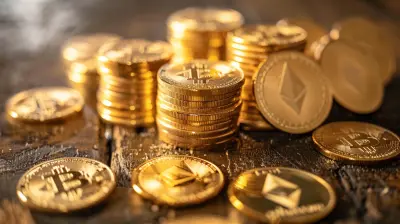Ethereum 2.0 and What It Means for Decentralized Applications
5 July 2025
When Ethereum first hit the scene, it revolutionized what blockchain could do. It wasn’t just about digital money anymore. Now, we could have smart contracts, decentralized finance (DeFi), and a whole ecosystem of decentralized applications (dApps) running on this global, unstoppable computer.
But as cool as all of that sounds—let’s be honest—Ethereum hasn’t exactly been silky smooth. We’ve seen high gas fees, network congestion, and scaling issues that made using dApps a bit like trying to drive a Ferrari in bumper-to-bumper traffic. Enter Ethereum 2.0.
So, what is Ethereum 2.0? Why should dApp developers and users care? And how is this massive upgrade set to reshape the future of decentralized applications? Let’s dive in and unpack it all, piece by piece.
What Is Ethereum 2.0?
Ethereum 2.0 (also called ETH2 or Serenity) is not some new coin or parallel chain. It’s more like Ethereum putting on a supercharged exosuit to fix its weaknesses and scale for the future. It’s an upgrade in several phases designed to improve Ethereum’s performance, security, and scalability.The biggest change? Moving from Proof of Work (PoW) to Proof of Stake (PoS). But that’s just the tip of the iceberg.
Here's a breakdown of the major upgrades in Ethereum 2.0:
- Proof of Stake (PoS): Instead of mining with hardware, validators “stake” ETH to secure the network.
- Shard Chains: Ethereum gets split into 64 mini-blockchains (shards) to process transactions in parallel.
- The Merge: Ethereum’s current mainnet merged with the Beacon Chain (PoS chain) in 2022.
- The Surge, Verge, Purge, and Splurge: Future phases include scaling, optimization, and cleanup upgrades.
In short, Ethereum 2.0 aims to be faster, cheaper, greener, and more secure. But what does this mean for decentralized applications?
Why Ethereum 2.0 Matters for dApps
If you're someone who's ever rage-quit a DeFi app because of gas fees or slow transaction times, ETH2 is music to your ears. dApps are the beating heart of Ethereum, and these upgrades are laser-focused on making them better for everyone—users, developers, and investors.Let’s break it down.
1. Lower Gas Fees = Happy Users
Before Ethereum 2.0, the gas fees could feel like highway robbery. Imagine trying to send $20 worth of crypto only to pay $40 in fees. Total nonsense.With Ethereum 2.0, the network can handle way more transactions per second (TPS). That means less competition for block space—and yep, you guessed it—lower fees. This makes dApps way more practical for everyday users.
Think of it like this: more lanes on the highway mean less traffic. Ethereum 2.0 is essentially building those extra lanes.
2. Faster Transactions = Better UX
Have you ever waited minutes (or hours) for a transaction to confirm? That’s a serious buzzkill, especially for things like gaming dApps or real-time trades in DeFi.Shard chains and scalability upgrades in ETH 2.0 crank up the throughput. We’re talking thousands of transactions per second, not just a couple dozen.
This transforms the user experience. dApps can now function with the speed and responsiveness we expect from traditional web apps.
3. Greener Blockchain = Better Public Image
One of the most criticized parts of Ethereum (and crypto in general) has been its energy consumption. Proof of Work is resource-hungry—just ask Bitcoin.Ethereum 2.0’s move to Proof of Stake reduces energy use by over 99%. That's massive.
For dApps trying to appeal to eco-conscious users (which is, let’s face it, most people nowadays), this shift is a branding goldmine. You’re building on a platform that’s not scorching the planet. Feels good, doesn’t it?
4. More Developers, More Innovation
A faster, cheaper, eco-friendly Ethereum is like honey to developers. It removes a ton of the technical and economic friction involved in deploying dApps.Think of it like building a house. With ETH 2.0, you’re no longer building in a swamp full of quicksand and permits. You’ve got solid ground, better tools, and plenty of space.
Expect a flood of new dApps and improvements to existing ones. This could be the golden age of decentralized apps.
Developer Perspective: What Changes for You?
If you’re a dApp developer, Ethereum 2.0 brings both opportunities and necessary adjustments. Here’s what’s in your toolbox now:🔹 Proof of Stake Impacts
With staking, validators are now responsible for network security. While this doesn’t directly affect how your dApp runs, it does mean the network is more secure and efficient. Plus, if your dApp deals with staking services, there’s a whole new economy to tap into.🔹 Sharding Strategy
Sharding changes how data is stored and processed. Eventually, dApps may need to be optimized for accessing data across shards. This means a bit of rethinking in your architecture, but the performance gains? Totally worth it.🔹 Lower Costs for Smart Contracts
Smart contracts can be expensive to deploy and interact with. ETH 2.0’s scalability should cut many of those costs, making your dApp more affordable to run and more enticing to users.
Real World Impact: dApps That Will Benefit the Most
Some types of dApps are positioned to benefit more than others. Let’s call out a few of the top ones:🏦 DeFi Projects
Think Uniswap, Aave, Compound—these apps rely heavily on fast, cheap, and secure transactions. With ETH 2.0, the DeFi scene can expand its reach, especially to users who were priced out before due to high gas fees.🎮 Blockchain Games
Gaming dApps are super sensitive to latency. You can’t have a player wait 45 seconds for a move to register. ETH 2.0 helps fix that. Expect more immersive, responsive blockchain games in the near future.🧠 DAOs and Governance Platforms
Decentralized autonomous organizations (DAOs) rely on on-chain voting and proposals. With reduced costs and improved scalability, it becomes easier and cheaper for communities to participate.📱 Social dApps
Social platforms built on Ethereum, like Lens Protocol or others, suffer when it's expensive to interact. ETH 2.0 brings down the cost of social engagement, laying groundwork for true Web3-native social experiences.Challenges and Considerations
Let’s not pretend like Ethereum 2.0 is a magic bullet. There are still challenges to tackle.❗ Rollouts Are Gradual
We're not flipping a switch; ETH 2.0 is being rolled out in phases. While the Merge is done, sharding and full scalability features are still in the works.So, if you’re expecting warp speed tomorrow, pump the brakes a little. It’s a marathon, not a sprint.
❗ Learning Curve
Some of the backend changes (like data availability layers and cross-shard communication) may throw some curveballs at developers. The tooling is improving, but it’ll take time to flatten the learning curve.❗ Layer 2 Is Still Here
Layer 2 solutions (like Optimism, Arbitrum, and zkRollups) will continue playing a major role. Ethereum 2.0 doesn’t eliminate them—it actually complements them. So, developers and users will still need to juggle mainnet vs. L2 decisions.What This Means for the Future of Web3
Ethereum 2.0 isn’t just a technical upgrade—it’s a cultural and economic shift. It's Ethereum growing up, shedding its training wheels, and preparing to scale to the demands of millions (or billions) of users.🔮 Imagine This:
- Using DeFi apps with near-zero fees- Playing blockchain games that feel just like traditional ones
- Launching a DAO with anyone in the world, without needing to be a dev
- Building on Ethereum without needing VC-level capital just to pay gas fees
That's the world Ethereum 2.0 is aiming to build. It’s not here 100% yet, but the foundation is laid, and the future is looking incredibly bright for decentralized apps.
Final Thoughts: Should You Be Paying Attention?
Absolutely. Whether you're a developer planning your next big dApp, an investor watching the space, or just a curious crypto enthusiast—Ethereum 2.0 is one of the most important upgrades in crypto history.It reshapes what’s possible on the Ethereum network and marks a giant leap toward making Web3 accessible, sustainable, and scalable.
So yeah, keep your eyes on Ethereum 2.0. The dApp renaissance is just getting started.
all images in this post were generated using AI tools
Category:
CryptocurrencyAuthor:

Audrey Bellamy
Discussion
rate this article
1 comments
Esme Evans
Ethereum 2.0 represents a pivotal evolution in blockchain technology, promising enhanced scalability and reduced energy consumption. As decentralized applications thrive within this robust ecosystem, we must ponder the implications for broader societal structures and the balance between innovation and regulation in our digital future.
July 14, 2025 at 12:48 PM

Audrey Bellamy
Thank you for your insightful comment! Indeed, Ethereum 2.0's advancements will significantly impact not only decentralized applications but also our broader societal frameworks, highlighting the crucial interplay between innovation and regulatory measures.


